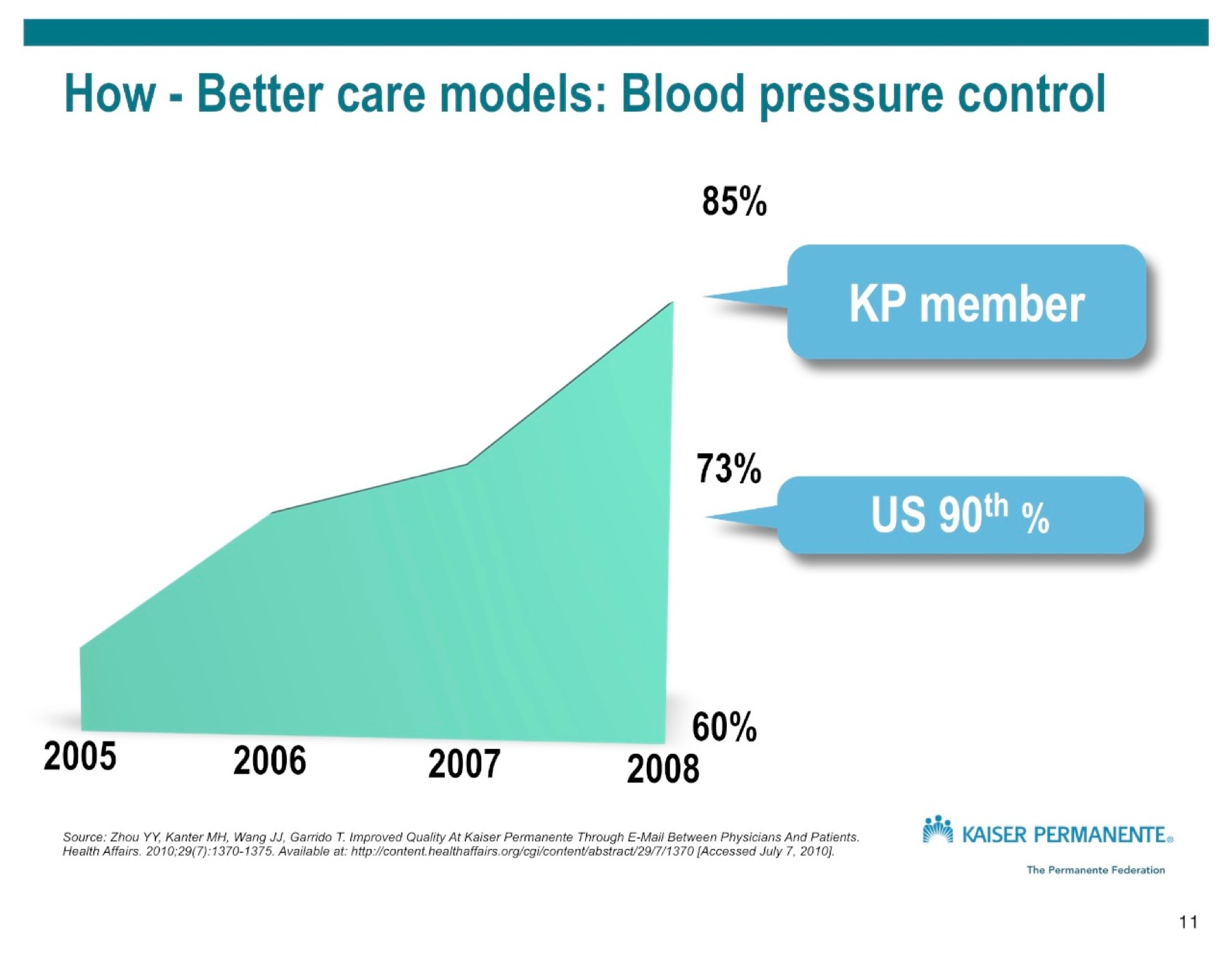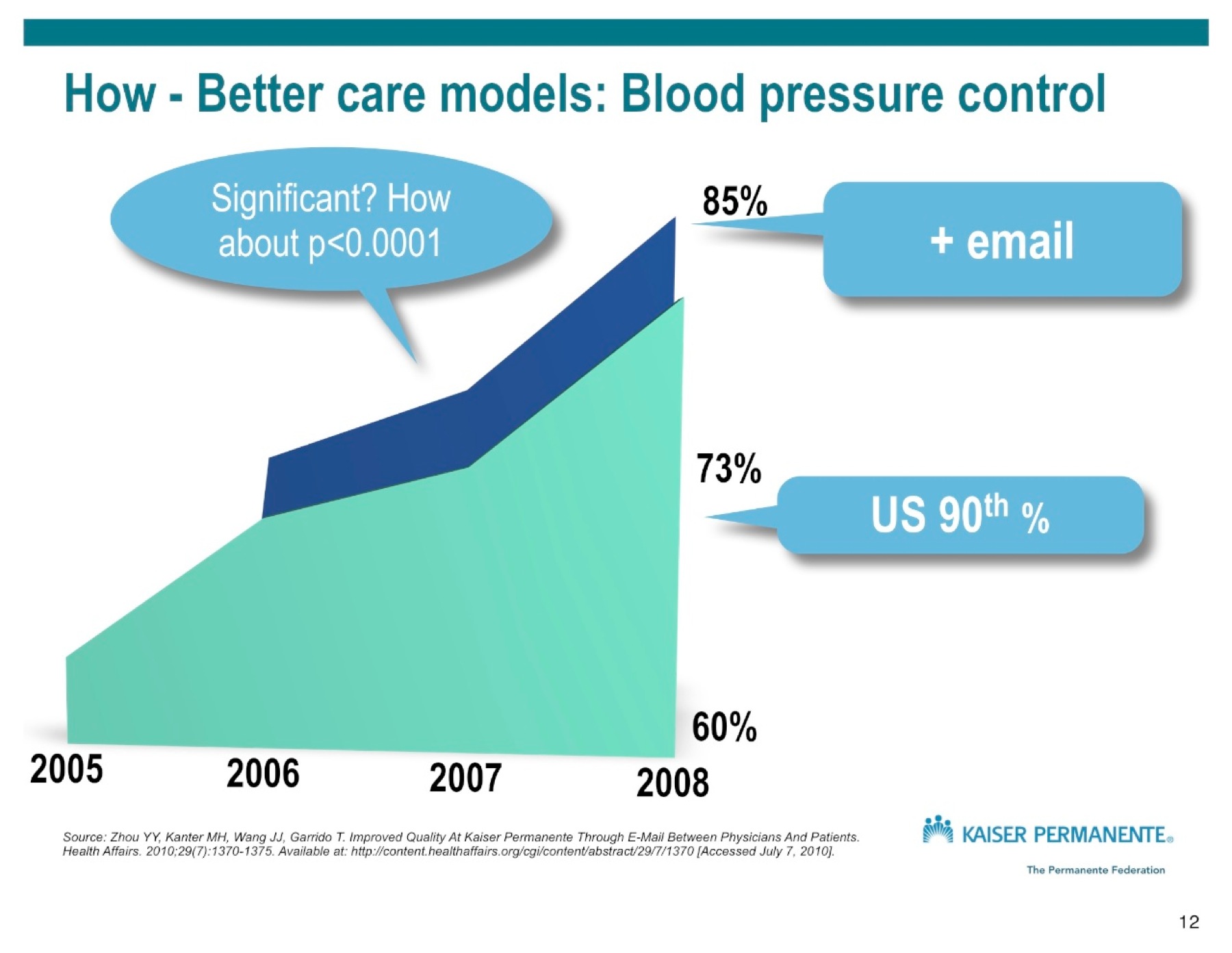Vital Signs: Awareness and Treatment of Uncontrolled Hypertension Among Adults — United States, 2003–2010 – There are a lot of posts on this blog about hypertension , consistent with my interest in prevention, especially for something so preventable, and so common.
The latest data just came out from the CDC, along with this article in the New York Times: Simple Treatments, Ignored
The CDC data says that 66.9 million adults in the United States have hypertension, 30.4 % or almost 1/3 of the American population. 46% of Americans have their blood pressure controlled, 53% do not. These are terrible numbers.
The article didn’t have a link to previous treatment numbers – have we gotten better or worse?
Well…I just looked up the last time I wrote about hypertension on this blog and found this post, which has a screen shot of 2006 numbers: How Health Services Researchers Can Harness Data : Discussion at Health Innovation Week, SF | Ted Eytan, MD
The news isn’t good. The screenshot from 2006 says 74.5 million people over 20 had high blood pressure, 77% were aware, 44% had it under control, 55% did not. So this is a worsening of the situation, in the midst of our technological revolution.
The New York Times article says:
Dr. Thomas Frieden, director of the C.D.C., said health care providers who make reducing high blood pressure among patients a top priority can quickly bring it under control. He pointed to Kaiser Permanente, a multistate managed care consortium (editorial comment, it’s actually a non-profit integrated health system, with 17,000 physicians and 46,000 RN’s), as one that has had real success on this front.
Kaiser Permanente says that in Northern California it increased the percentage of patients whose hypertension was under control from 44 percent in 2001 to 87 percent in 2010. Over approximately the same period, stroke mortality declined by 42 percent, heart attacks by 24 percent and the most serious type of heart attack by 62 percent. The organization created a hypertension registry to track patients and the care they were getting; eased the burden on doctors by using pharmacists to initiate drug therapy and medical assistants to monitor patients’ progress; made it easy for patients to get free blood pressure checks; and showed doctors how their record on controlling blood pressure compared with others in the system.
The same trend has been documented in Kaiser Permanente Southern California. Note the power boost from patient involvement, through secure e-mail:


I guess my conclusion is that I’m disappointed that a condition so treatable, and so responsible for needless suffering, including heart attacks and strokes, is not being managed better by our health care system. At the same time, there are models that work, and strong efforts to change this news (see: Walking Podcast! Janet Wright, MD, for Million Hearts: “systematic care, put in place, works like a charm” | Ted Eytan, MD). Health Information Technology is great, but it is not what’s new and great in health care. Prevention is.